Table of Contents
Introduction
Loyal readers of In-Ear Fidelity would know that I’ve been a big fan of Samsung’s true-wireless earbuds, and for good reason. It’s not coincidence that Samsung started to churn out excellent audio products after the acquisition of Harman International, a company dedicated to research into consumer sound profiles and the ultimate proliferator of the “Harman Target”, a frequency response target that basically predicts consumer preference.
The original Galaxy Buds was an amazing product, both in its time and till today. The Buds Plus, while making big strides in things like battery life and IPX standards, wasn’t really an improvement in terms of sound (in my opinion). And the Galaxy Buds Live… well, technically they’re earbuds and I hate earbuds, so I skipped that generation entirely.
With the release of the Samsung Galaxy S21 series of phones, Samsung also announced the release of their newest update to the Galaxy Buds line: the Galaxy Buds Pro. Sporting a strong IPX7 rating and ANC capabilities, seems like now they’ve caught up to the rest of the TWS market in terms of features and QoL changes.
But this is In-Ear Fidelity, and people read us for one thing and one thing only: sound quality. So now we answer the question that everyone else skims over: how good do the Samsung Galaxy Buds Pro actually sound?
Product page: https://www.samsung.com/us/mobile/audio/headphones/galaxy-buds-pro-phantom-black-sm-r190nzkaxar/
MSRP: $200
Driver configuration: Dual dynamic driver setup
This Galaxy Buds Pro was kindly provided by Samsung.
Foreword
And Non-Audio Opinions
If you’re not interested in the following, you can skip right to the next section using the Table of Contents above. This section is only published on reviews and articles that would attract a more mainstream audience (e.g. my AirPods Max review).
Self-introduction
So first and foremost, I’m sure there’ll be many reading this review who aren’t familiar with me or my work who would (understandably) be asking: who is this guy? Why is he calling himself an audiophile? Why should I listen to him?
Hello, I am known as “crinacle” and I run In-Ear Fidelity (IEF), a fully independent website dedicated to the “portable audio” scene of the audiophile hobby, mainly focused on headphones and earphones. I first started in the hobby in the late 2000s (the earliest official record being my Head-Fi registration in 2011) and started getting a reputation for myself only around 2016, with the IEF website being created in early 2019. In short, I’ve been in the hobby for a little over a decade, and been involved in the audiophile community for a little under that.
(Do note that the portable audio hobby is relatively young, so don’t expect your average “veteran of the hobby” to have “decades of experience” like with the 2-channel speaker world.)
Currently I maintain the world’s largest public database of frequency response measurements for headphones and earphones, and I also maintain highly popular ranking lists of (most of) said headphones and earphones.
This is my full-time job so one could call me a “professional” considering that, well, this is my profession. It is my job to keep up to date with the audio scene, provide my thoughts and opinions on various products and topics, and of course making sure that my measurements database don’t go obsolete by keeping it updated with new releases.
As for why you should listen to me… that’s really your call to make. On many occasions I’ve labeled myself as simply “a guy on the internet” because that’s really all I am: just one of the many voices out there in the world. And while of course nobody should take my word (or anybody else’s) as gospel, I do hope that you would take my opinions into consideration when contemplating a purchase. If anything else, at least just for audio-related concerns since that’s my specialisation.
Driver changes
Probably the most interesting thing about the Buds Pro’s specifications (at least, from the nerd’s standpoint) is that they’ve shifted away from the unique square-shaped dynamic drivers designed for the Galaxy Buds Plus back to the traditional circular dynamics:
Now I’m personally a sucker for multi-DD designs, especially one that’s coaxial like in the Pros. Gives me real IER-Z1R vibes.
Of course driver specs and numbers don’t tell the full story at all, so read on more so see if these new drivers result in improved sound.
ANC, Ambient mode & Isolation
Not going to touch on this too much considering that I don’t have the tools to measure isolating capabilties yet. In my own experience using the Buds Pro outdoors, the ANC is serviceable but nothing I’d consider groundbreaking. The isolation of the housing itself is probably the weak link; while the ANC is effective enough to cancel out low frequency noise, the lack of robust higher-frequency cancellation results in the environment around me sounding “bright” or “bassless” rather than effectively muffling noise.
Certainly not as effective as a good ANC headphone (Bose 700, Sony WH1000XM4, even the Apple AirPods Max) but at the very least the ANC functionality does not create discomfort for me.
Comfort & Fit
The form factor of the Buds Pro is similar to its predecessors (excluding the Galaxy Buds Live for obvious reasons), and is one of the best fitting TWS earphones on the market today for that reason. A secure fit helped by hugging the contours of the concha bowl means that it’ll never feel like falling out (unlike the notoriously huge Sony WF-1000XM3) and works very well as a pair of sleeping buds.
Battery Life
5 hours. Yes that’s all you get, 5 hours on a single charge. That’s with ANC on of course; with ANC off you’d be able to get 8 hours on a single charge, but let’s face it: when you buy a Buds Pro, you wouldn’t be using it without ANC. And let’s not compare to the Galaxy Buds Plus that manages a hefty 11 hours on a single charge.
I don’t find it a problem once I’m outdoors, but it would be nice to not have to worry about charging my TWS earphones every night. The Galaxy Buds Pro’s case contains another 13 hours of charge (assuming ANC on) bringing the total to 18 hours of playtime, whereas the Galaxy Buds Plus almost doubles that with 11 hours of earbuds charge with an additional 22 hours of case charge.
Equaliser Presets
Like with previous Galaxy Buds models, the Galaxy Wearables app supports the use of different equaliser presets, namely:
- Bass Boost
- Treble
- Dynamic
- Clear
- Soft
However, as the Galaxy Wearables app will not support the Galaxy Buds Pro on iOS, I am forced to regard these as “exclusive features” and as such will not be a factor in this review. However, I have done some measurements to determine the kind of EQ profile used for each preset.
Legend:
Black represents the Buds Pro’s FR after applying the preset.
Grey represents the Buds Pro’s default FR.
Green represents the EQ profile of each preset.
In my opinion, the default preset still sounds the best. I wouldn’t bother with this gimmick.
Signature & Tonality
Not sure how to read graphs? Click here
This review is based on the Galaxy Buds Pro connected to the Samsung Galaxy Z Fold2.
The Galaxy Buds Pro’s sound signature can be described as a “warm V-shape”, wherein there is an emphasis in the treble frequencies alongside a general boost in the lower frequencies that encompass both the bass and lower midrange frequencies. A better technical descriptor would also be “warm Harman” for reasons explained further below.
It is certainly far thicker and warmer than I was expecting; after all, it’s no secret that Samsung had been taking a lot of tuning cues from Harman’s research in most of their recent audio products. I myself am not a big fan of the Harman (In-Ear) Target, much less worship it, and for those out-of-the-loop here’s a brief rundown of why:
- Way too much emphasis from 2kHz to 10kHz (shouty, intense, shrill, fatiguing etc.)
- High contrast between the upper midrange and lower midrange, which is already 1-2dB recessed compared to a flat line (thin mids, no body, lacks note weight)
- Probable underestimation of the required upper-treble response, though the Harman research admits that this is due to coupler limitations past 10kHz
Thankfully, the Buds Pro seem to have deviated rather significantly from what some in the audiophile community would consider “The One True Curve”. Admittedly the deviations can be for the worse in some places, but mostly for the better overall.
Buds Pro measurements compensated to Harman IE 2019
Comparison courtesy of the Graph Comparison Tool
Probably the biggest change would be the increase to the lower-midrange in the Buds Pro, resulting in less of a contrast between the lower mids and the upper mids. This results in far less “shout” and harshness in the tonal profile of the Buds Pro and makes higher-register instruments far more pleasant to listen to. But while the midrange is thicker, I wouldn’t characterise the Buds Pro as a thick-sounding pair of IEMs either; it nicely straddles the line without being coloured in either direction.
The one caveat I would put is that the Buds Pro could have a more pronounced notch around 200Hz to better separate the bass from the midrange. In stock configuration, the Buds Pro is edging towards a slightly bloated bass response, at least moreso than its predecessors. I have heard bass far less controlled than the Buds Pro in various other IEMs, sure, but when such an IEM is so close to being tonally “all there”, the minor flaws are just amplified that much more.
Outside of that, I’d really have to nitpick to find a big flaw in the Buds Pro’s tonality. Instruments sound as they should with minimal colouration, with little fatigue or harshness going on. Tuning-wise, Samsung have almost nailed it. Not “nailed it” like a bare passing grade, no. “Almost nailed it” in that they just need a little extra refinement to join in the ranks of being one of the best tuned IEMs available, regardless of price and/or presence of wires.
TL;DR:
- Warm V-shaped sound signature
- “Warm Harman” also a valid descriptor
- Good balance in the midrange
- No shoutiness or harshness
- Mid-bass is slightly bloated
Tone grade: A+
For more information on the grading system, click here
Technicalities
Alright sure, the Buds Pro has the tonality down on lock. But they’re still unfortunately bottlenecked by one big thing: Bluetooth.
Or at least… I think it’s Bluetooth. Regardless of the actual cause, one thing is clear: even the Buds Pro has a ways to go when fighting against the wired crowd on the technical front. With the Buds Pro it’s more obvious than ever that the Bluetooth TWS market has hit a wall in terms of “the intangibles” (resolving ability and imaging, though the former is more relevant in this discussions). And while the Buds Pro aren’t bad by any means, it’s one of those cases where I can see the unfulfilled potential bottlenecked by… something. Whether it being the Bluetooth connection or the quality of the drivers themselves, that is a separate topic altogether.
There are some improvements here and there relative to the Buds Plus at least. The big change here would be in timbral performance; I’ve been a big critic of the Buds Plus’ treble timbre having this weird “bitcrushed” quality to it, and giving the overall sound a weird artificial edge to it. The Buds Pro, thankfully, has none of that going on this time. It just sounds like a good dynamic driver IEM, which may sound like a backhanded compliment but is harder to achieve than one may think.
Next to something like, say, a Moondrop Blessing 2 (one of the best $300 IEMs available), the difference in detail retrieval is apparent. Sure, the Blessing 2 has higher clarity (which is function of frequency response) but also manages to resolve more low-level detail than the Buds Pro, which sounds a lot more obscured in comparison. The Samsung Scalable Codec (SSC) does help a little over traditional SBC, but it’s not a day-and-night difference. At the very least, it’s not a difference that results in a completely different grading.
TL;DR:
- No timbral issues like in the Buds Plus
- Good resolution, but bottlenecked
Technical grade: B
For more information on the grading system, click here
Valuation
A brief primer on my valuation system, I give out “awards” based on three merits:
★: “Worth the price”
★★: “Redefines the price bracket”
★★★: “Worth the Blind”
Here is the important part though, these are awarded purely on the basis of sound quality. After all, this is an audio-focused headphone review website, and as such the ratings are audio-focused as well.
Within the realm of the TWS market, I’d have no qualms in calling the Galaxy Buds Pro as the best-sounding TWS earphone available. Of course, they share this “award” with the AKG N400 but I don’t think that matters too much considering that a) the N400 is pretty much a Korean-exclusive product and b) AKG is owned by Samsung anyways.
Against the rest of the IEM market in general, it’s pretty much the same situation as well. The tuning of the Buds Pro is what really carries it up to an exceptional status, and of course with the combination of acceptable technical performance means that it is well truly “punching above its weight” at its price bracket of $200. And let me be clear again that the Buds Pro isn’t just great relative to the TWS market, but the entire IEM market.
For that reason, I’d have no qualms in bestowing the Buds Pro with the coveted double-star rating. The wired purists may hate it but they cannot deny: the bar for $200 has never been higher.
Value Rating: ★★
“Redefines the price bracket”
For more information on the grading system, click here
The Galaxy Buds Live (AKA the “Beans”) have been deliberately omitted because they’re technically earbuds, and earbuds don’t deserve any attention on this website.
The Galaxy Buds Pro take the most significant departure from Harman amongst the three, being both the warmest and the bassiest. As a consequence, the Buds Pro is also the “dirtiest”, with the least controlled bass response and more significant blooming. However they do also have the best treble extension of the three, and so the Buds Pro takes the lead as the TWS that sounds the most “airy” and more representative of the harmonics present in brighter instruments.
Against the Galaxy Buds Plus, as mentioned, the Buds Pro manages the solve the treble timbre problems of its predecessor. The Buds Plus is also noticeably thinner sounding and with greater sub-bass presence, though the Buds Pro has more overall bass presence. Technicalities are similar between the two, so between the two I’d consider the Buds Pro as a valid upgrade.
With a three-generation gap, the original Galaxy Buds holds up surprisingly well to the Buds Pro sound-wise, with the most significant differences being in the tuning itself. The Galaxy Buds is noticeably brighter and far less bassy overall, making it the TWS with better clarity. However, the Buds Pro has the clear advantage in treble extension, and the tonal balance of the Pro comes closer to my own tastes and preferences.
The difference between the three isn’t really as clear-cut as “Pro > Plus > Original”. For most ears, the sonic differences are minor and more to do with tuning and tonal changes rather than any appreciable improvement in sheer technicalities. For most intents and purposes, one would pick the Pro for ANC capabilities, the Plus for battery life, and the original Buds as the cheapest model available.
Conclusion
Regardless on your thoughts on the subpar ANC/isolation and mediocre battery life, there is one thing the Samsung Galaxy Buds Pro leads the market on: sound quality.
The Buds Pro is one of the best TWS IEMs I have tested and can very well give similar “audiophile” IEMs a run for their money. Sure, the bottlenecks are there in terms of the mandatory Bluetooth connection fudging up some detail. But from a tuning standpoint… Samsung has it down pat.
Grade: B+ ★★
Awarded grades are in reference to the Ranking List.
For those interested in a larger perspective into the TWS market as a whole, do take a look at my Buyer’s Guide below.

Buyer’s Guide: Best True Wireless Earphones of 2022
Crinacle’s guide to the overwhelming world of TWS earphones.
Support me on Patreon to get access to tentative ranks, the exclusive “Clubhouse” Discord server and/or access to the Premium Graph Comparison Tool! My usual thanks to all my current supporters and shoutouts to my big money boys:
“McMadface”
“Galactus”
Will
Man Ho
Denis
Alexander
Tiffany

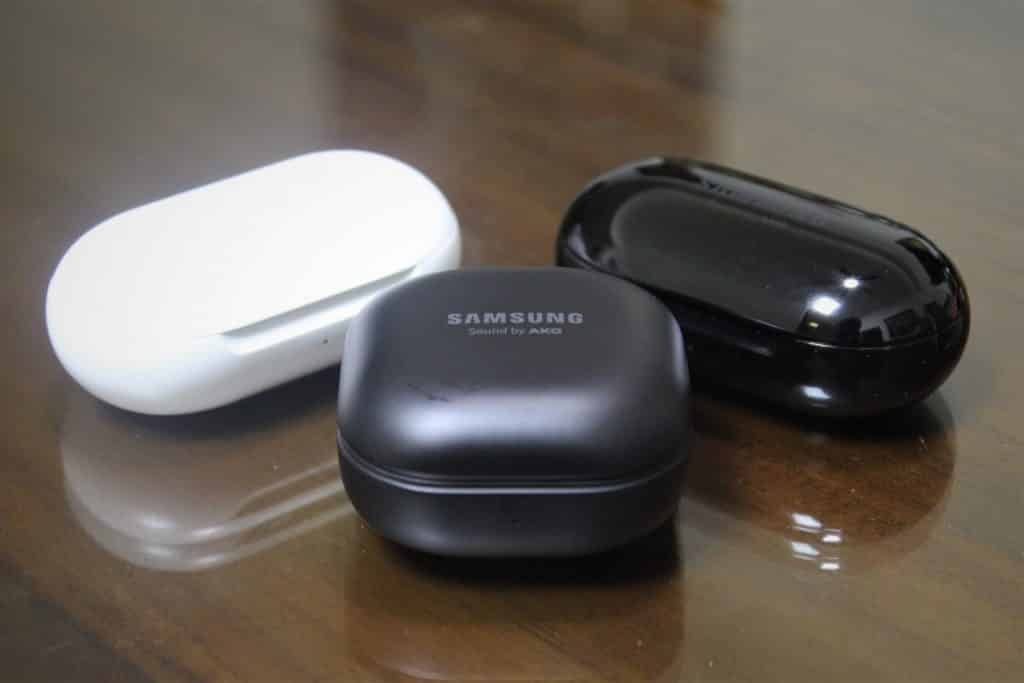
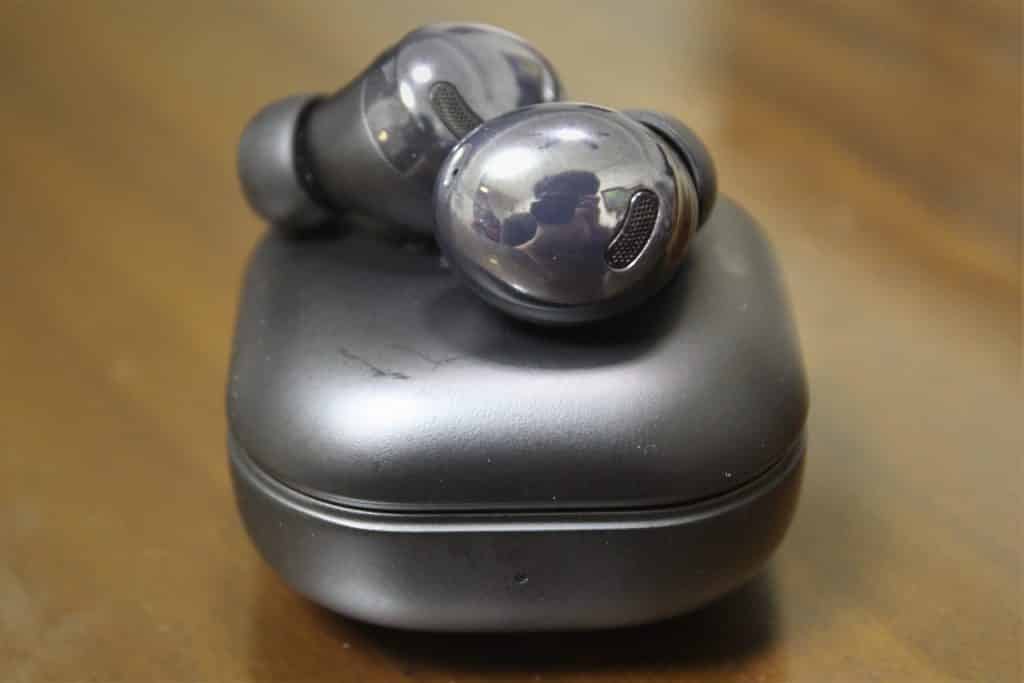
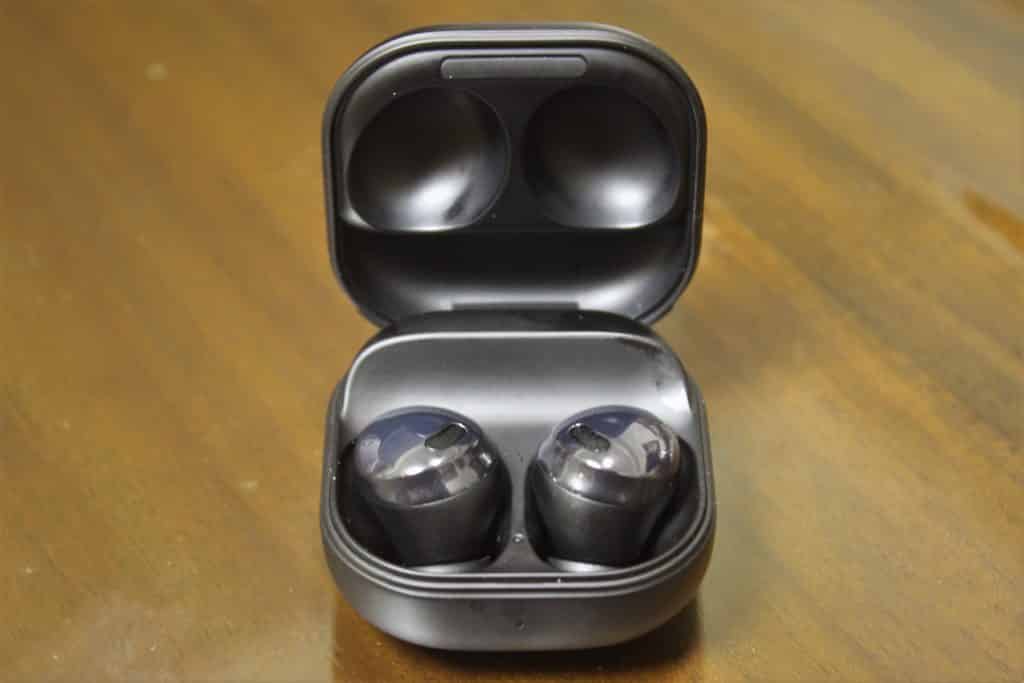
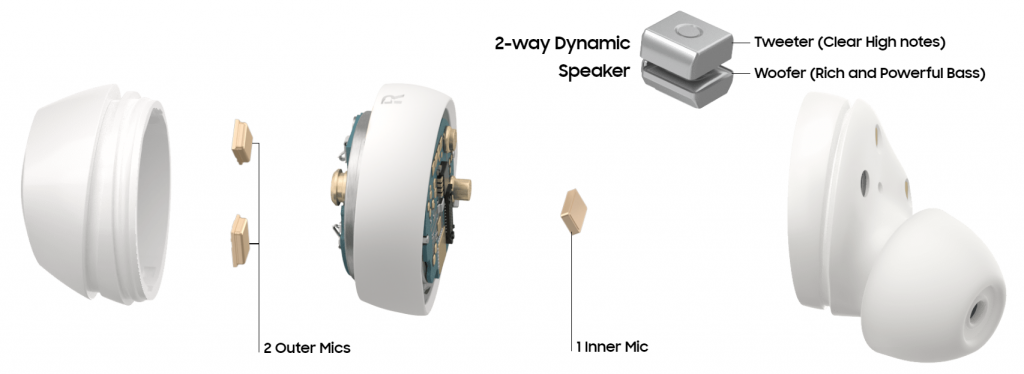

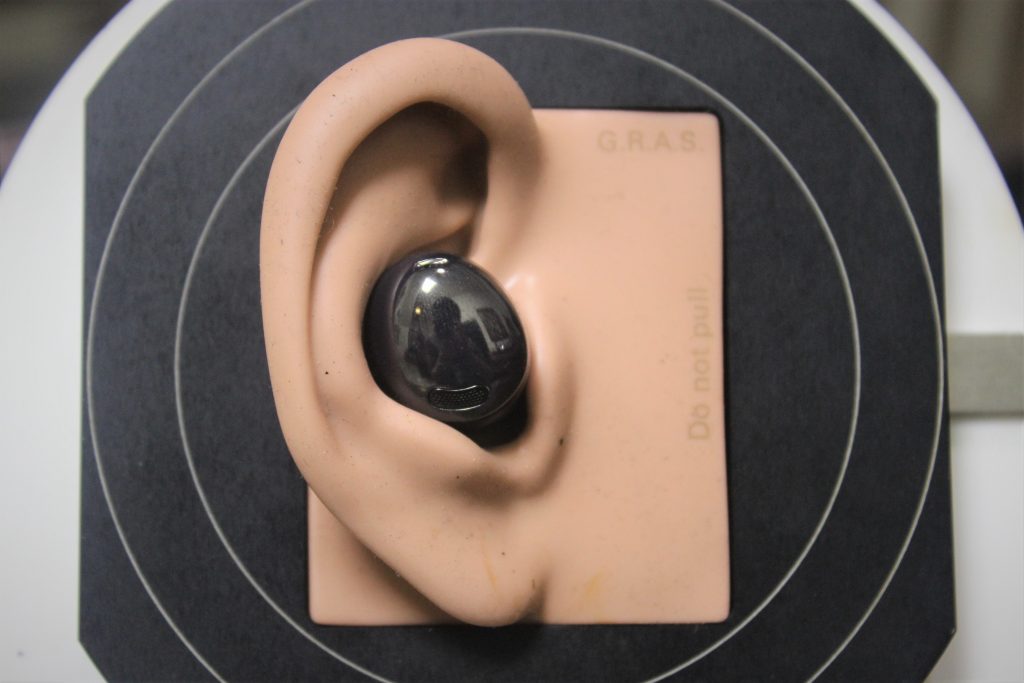

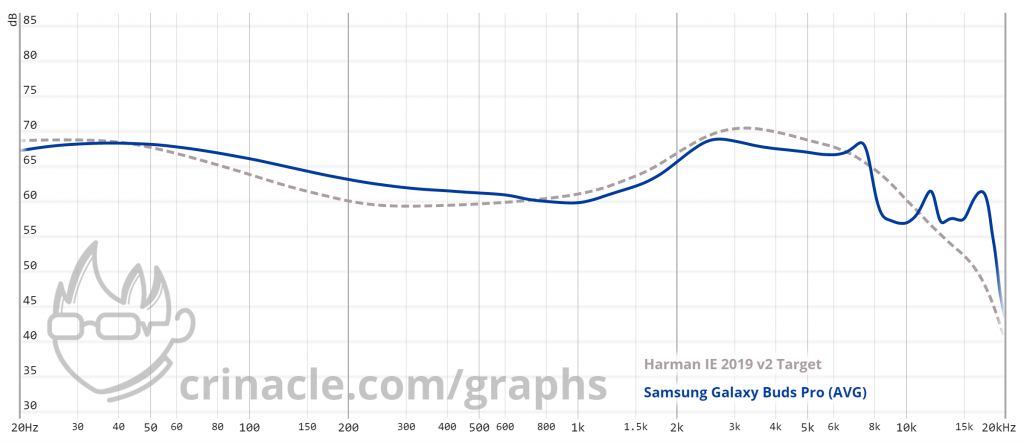
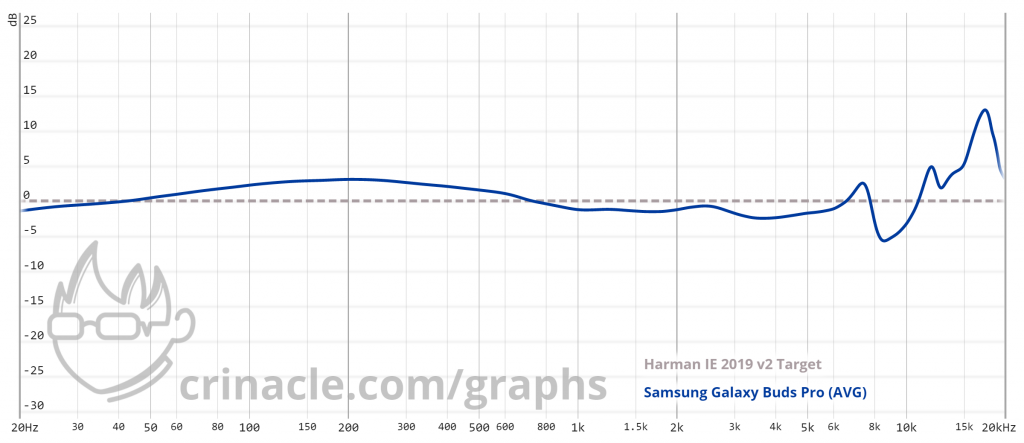


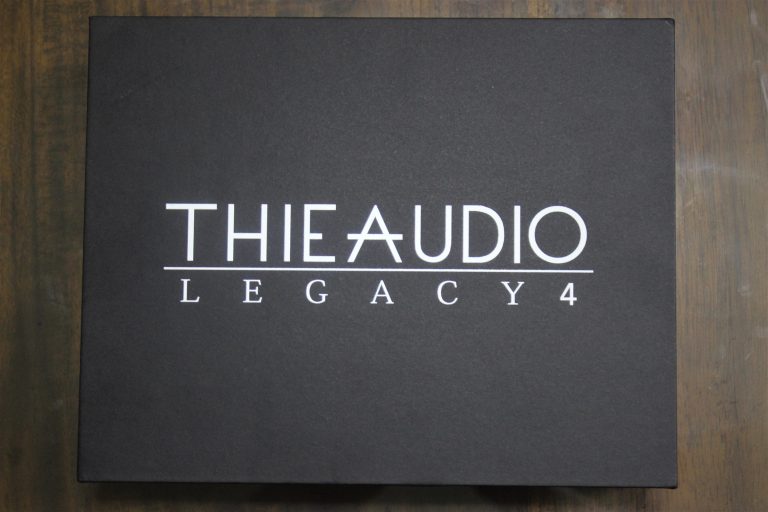
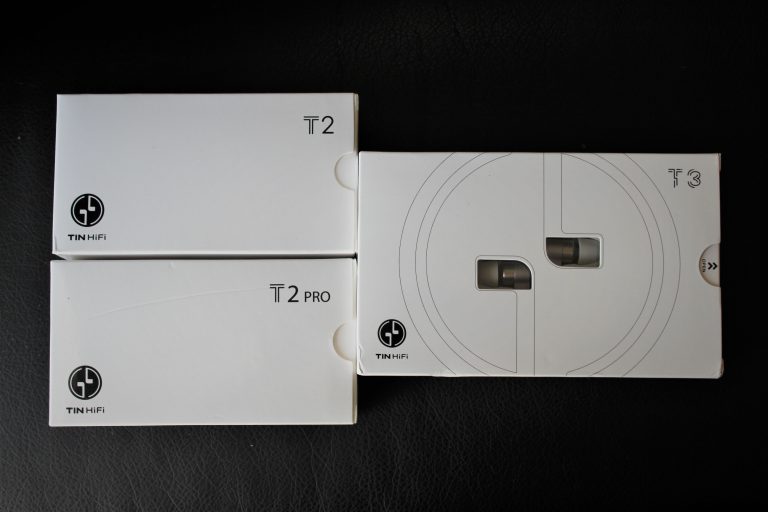

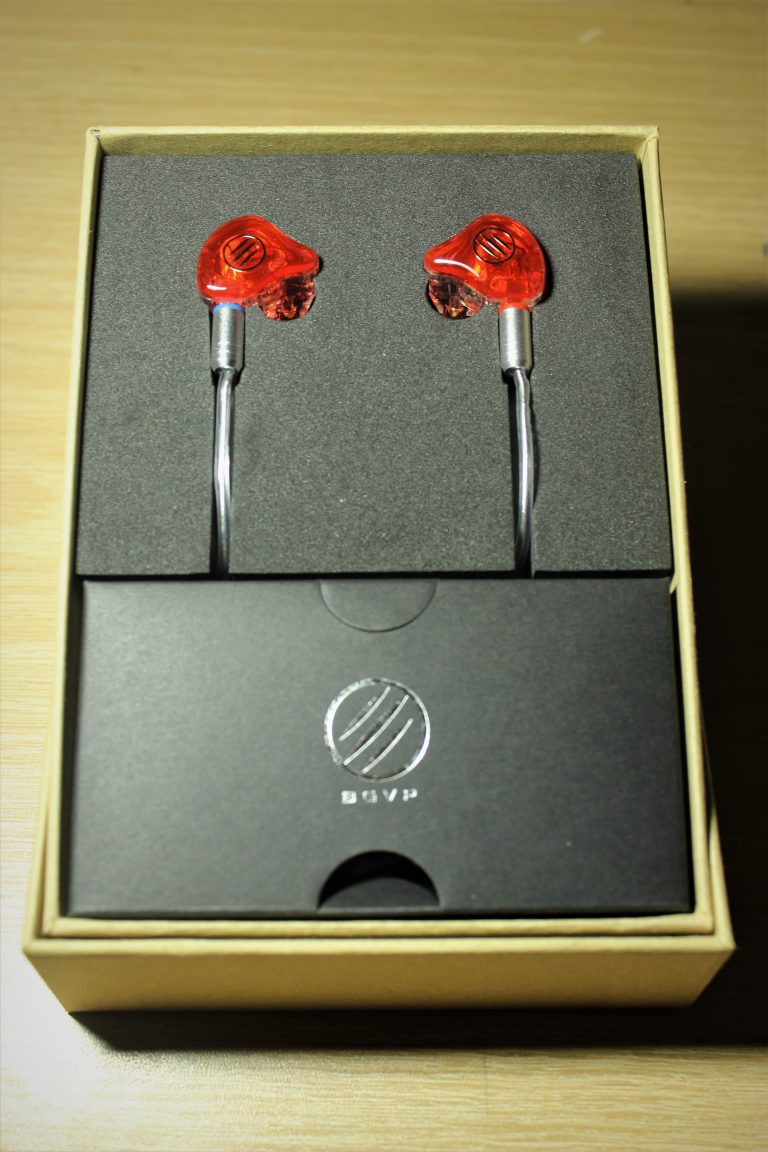



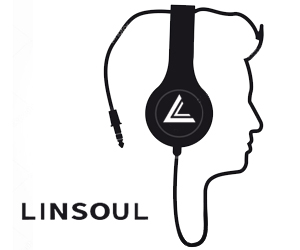

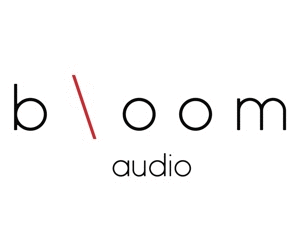
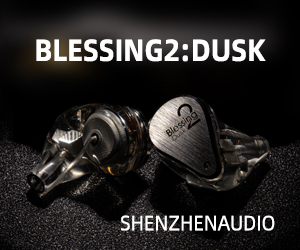
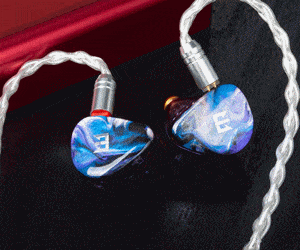

37 thoughts on “Samsung Galaxy Buds Pro Review: The Audiophile’s Perspective”
I think the review missed the chance to give a few words comparing to wf – 1000xm3
I am sure lot’s of people was expecting that.
This.
+1, was strange to compare the noise cancelling to headphones and state its not as good as them instead comparing it to other truely wireless iems like Sony WF1000XM3 and Airpods Pro.
“Within the realm of the TWS market, I’d have no qualms in calling the Galaxy Buds Pro as the best-sounding TWS earphone available”
That seems pretty clear.
same
Can you compare ANC to WF-1000XM3?
he only tests for sound quality
From 500Hz to 2k is there a lost of presents because of the major boost from 30Hz to 200Hz?
He doesn’t cover that aspect, you can look for other tech reviewer for this. At this site sound quality is the only thing matters
How close is the dynamic mode to the Harman Curve tho? That’s what most people will have them in. The original galaxy buds didn’t even have a normal mode, they just had dynamic.
These got a B+, but the Sony WF-1000xm3 got a B.
Are the buds pro really better??
Yes. I have both and I prefer the buds pro. They have more clarity and a better soundstage.
Too much bass. Also how do they sound compared to AirPods Pro?
Most if not all audiophiles consider buds pro to be alot better in sound quality than airpods pro. Airpods pro are better in anc.
True. I am also searching for someone comparing them both but can’t find any. I also can’t decide which one to get between these two.
To help to reduce that bottleneck feel over bluetooth. If you are using Android, jump to developer option and change the AVRCP from 1.4 to version to version 1.6, It makes the sound somewhat more open and slightly less worm. It is not that big of a change, more like jumping from 256kbps to 320kbps, not big but somewhat noticeable and could help.
Very good review as always!
how could this be compared to high end iems such us ie800s or some final audio, that you also value as B or B+ ? I am a little confused…why should someone buy for example the ie800 instead of a B+ product for much less money with the same audio quality? … thanks a lot !
@Filipo:
I dont think you can compare wired vs the true wireless earbuds.
To my ears the IE800s sound much better than Sony WH-1000XM4 or WF-1000XM3 or the Shure SE535 earphones…
So the ratings should depend of the category….
Also those Buds Pro are rated here better than the Momentum True Wireless 2 which i find very strange…
It’s an universal ranking solely analyze its performance in tuning and technicality, no matter is it wired, TWS, or whatever. Yes, you can compare it, why not? Wired “being better 100% of the time than wireless” is obsolete idea right now, top of the rank might be filled with wired and mostly in a kilobucks price, but you’re going to see few TWS now in mid performance category (C+ to B+) simply because there’s good TWS right now.
If Crin give Buds Pro a B score in technical performance, this means it’s better than let’s say a whooping $1500 Campfire Solstice (wired) in technical standpoint (timbral, imaging, soundstage, transient, etc etc). If you see Sennheiser Momentum TWS ranked lower than Buds Pro, it’s simply means that Crin think it is worse/bad based on his metrics.
Fair enough for the comparison.
I dont totally agree with the results because i felt a nice gap from my listening experience with IE800(s) wired vs all my other wireless earbuds or headphones in bluetooth…
maybe it is just a matter of personal preference as well. 🙂
If you could choose between the Pros and the N400s, which would you gravitate towards? I’m about to pull the trigger on either of them.
The thing you miss is the Samsung exclusive scalable Bluetooth codec that only works with Samsung devices that raises the bitrate considerably past crappy ACC sound which is the best iPhones can do. So add, a star to everything for Samsung users
FYI these are dirt cheap right now.. just got two for $100
where?
I totally concur with the review stating these are excellent sounding buds. I own the Sony XM3 and its day and night. Wider and deeper sound stage, excellent excellent instruments separation also. Regarding wired vs wireless, I must say I enjoy these buds as much as my wired ones (Audeze and Sennheiser). They sound great.
How?
You might have gotten the fake ones. There’s lots of fakes being sold on eBay and other sites.
Here’s how to spot the difference:
https://www.youtube.com/watch?v=egP1a9QmZRQ
This Samsung tws headset looks very good, the bass part is effectively strengthened, and the treble part is so soft. I will definitely try it if I have the opportunity. The Naneka tws headset I use now is 200 dollars cheaper than this Samsung headset, but Naenka The headset can still meet my basic needs.
Can’t agree more
Good review and very helpful as always. What about the Samsung Buds Live? Strangely felt they sounded better than any of the other three.
Has anyone noticed a sound quality improvement with details and Soundstage recently. I updated my samsung phone and the buds and, to my ears at least, things improved significantly. They were great before but now, wow. I would love to hear if it’s just me or anyone else has noticed this. I did go a little while without listening to music on them so that could be it..
Which phone do you use?
For me these are the best tws I have ever used. The bass is a bit more than neutral, but mood range and treble is good. The only issue I faced is driver flex in the left one. So returning then for a new pair. Anyone else faced the issue of driver flex with loud popping/clicking sound during insertion?
Talking about bluetooth bottleneck. Have you considered TWS with LDAC? I believe LDAC is able to transfer more bitrate than AptX
Would you test Bose QuietComfort? A musician I know said Bose QC’s sound quality and tuning are top tier and his favorite of all tws, and his comments about many other tws, including every generation of Samsung buds, were very close to yours.
How do buds 2 compare to these models, closer to original buds, or pros? Seems like a good deal for the price.